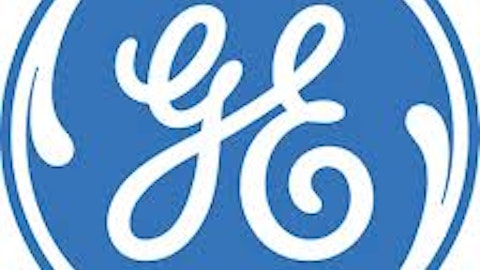
Earning highlights
The bank made virtually no headway in its most recent earnings report in terms of revenue. It reported flat revenues, with no year-over-year revenue growth. To address this, Wells Fargo & Co (NYSE:WFC) has stepped up efforts to increase the cross-selling of its financial products and has also increased the amount of lending it does. In the second quarter, Wells Fargo reported a 4% increase in average loans and reported a 6% year-over-year improvement in average core deposits.
Wells Fargo did report a 19% year-over-year growth in net income. The growth in net income was primarily driven by a 64% decline in the company’s provision for credit losses. The company reported a 4% decline in net interest revenue, but off-set that decline with a 4% improvement in non-interest income. Wells Fargo & Co (NYSE:WFC) earns half of its revenue from lending, and half of it from financial services. This even split allows for the company’s opposing segments to offset declines against the other.
The company reported earnings of $0.98 per share. Analysts on a consensus basis were expecting earnings of $0.93 per share for the quarter. The company narrowly beat the consensus estimate by 5.4%.
Growth opportunities
The growth in lending is negative impacted by the reserve requirements required for the bank, which is estimated to be 9.3% based on a Basel 3 tier 1 common ratio (a regulatory standard that imposes the amount of capital a bank should hold relative to its lending.) Currently Wells Fargo & Co (NYSE:WFC) has a 10.73% tier 1 common equity ratio (Basel 3.)
The hoped-for outcome is that the bank is able to improve the size of its lending portfolio at the same growth rate that deposits increase by. The bank could potentially increase its lending rate to match the rate of increase of its deposits (a 6% growth in lending) and maintain the Basel 3 requirements.
The assumed rate of growth for the next five years is 7.38%. The company may sustain higher rates of growth if it increases its amount of lending, generates modest improvements in cross-selling, implements a large share buy-back program, and makes mild cutbacks on operating expenditures.
A positive upside catalyst over the long-term is rising mortgage interest rates. The negative repercussion of rate changes will be felt over the short-term due to write-downs on the value of longer-dated debt securities that were refinanced at lower interest rates. The company’s mark-to-market accounting practices will have more of an implicit impact on earnings and will not affect cash flow.
The growth of JPMorgan Chase and Citigroup
It’s important to remember that paper losses are still losses, and investors should anticipate these effects to have a more drastic effect on a consumer bank like Wells Fargo & Co (NYSE:WFC). Banks that may experience less of an issue with paper asset write-downs include universal banks like JPMorgan Chase & Co. (NYSE:JPM) and Citigroup Inc (NYSE:C). Citigroup Inc (NYSE:C) may be the best hedged against interest-related risks as the bank operates its business across the globe; this allows it to offset interest-related losses from one geographic area with gains in another.
The two banks both have global reach and were able to grow revenues at greater rates than Wells Fargo in the past quarter. The growth in revenue was primarily driven by asset management and investment banking activities.
JPMorgan Chase & Co. (NYSE:JPM) reported 14% year-over-year growth in net-revenue which is solid, and implies that the bank may be able to sustain higher growth rates in future accounting periods. Likewise, Citigroup Inc (NYSE:C) reported 11% year-over-year growth in net revenue. The rally in stock prices had a favorable impact on earnings as both banks were able to generate solid growth in asset management fees.
Analysts on a consensus basis anticipate JPMorgan Chase & Co. (NYSE:JPM) to grow earnings by 46.58% for the current fiscal year. Comparatively, Wells Fargo & Co (NYSE:WFC) is projected to grow earnings by 11% and Citigroup by 22.50% for the same period. Citigroup is projected to grow the most out of the three, as analysts are willing to estimate 14.6% growth per year over the next five years. This is primarily driven by the fact that Citigroup has the lowest profit margin of the three at 11.81%, and could generate substantial rates of growth just by managing its costs better.
Conclusion
It certainly seems that Wells Fargo & Co (NYSE:WFC) got the short end of the stick. The consumer banking giant won’t be generating significant growth rates going into 2014. It may be facing interest rate headwinds that will lower its profitability over the short-term, but these headwinds will have the eventual impact of producing higher profit margins further in the future.
The universal banks (JPMorgan Chase and Citigroup) may have the most upside going forward. This is driven by the fact that JPMorgan Chase and Citigroup can depend on fee income from asset management and investment banking activities to spur higher rates of growth.
Of the three, Citigroup has the most upside as it has the lowest amount of profitability. Given enough time, I believe that Citigroup will manage its costs better and produce more earnings surprises further down the road.
The article Wells Fargo Gets the Short End of the Stick originally appeared on Fool.com and is written by Alexander Cho.
Alexander Cho has no position in any stocks mentioned. The Motley Fool recommends Wells Fargo. The Motley Fool owns shares of Citigroup Inc (NYSE:C), JPMorgan Chase & Co (NYSE:JPM)., and Wells Fargo. Alexander is a member of The Motley Fool Blog Network — entries represent the personal opinion of the blogger and are not formally edited.
Copyright © 1995 – 2013 The Motley Fool, LLC. All rights reserved. The Motley Fool has a disclosure policy.



